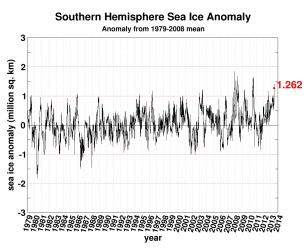Really Ian. A flat statement with no links to back it up?
how is this thread any different than the last thread we discussed this on? I couldnt be bothered to dredge up Zwally's presentations yet again. in case you havent noticed, generic 'chicken little' press releases get splashed over the media with google links galore. information contrary to CAGW, even when it comes from organizations like NASA, usually gets little publicity and you actually have to know where to look for it. Zwally made a big fuss over the glaciers losing mass on the penninsula, and in the last throw-away gesture stated that the continent as a whole was gaining almost 50GT per year.
Antarctica is a poster child for ridiculous CAGW alarmist claims. every new paper claims that now they know what is going on. until the next paper comes out and they have to scale back yet again. but they sure love to bring up the factoid about 'if the WAIS collapses the sea level will rise 30 metres' even though the next IPCC report will guestimate about 0.5 millimetre per year, and even that is wrong if Antarctica is really gaining mass.
Your evidence for this is?
Zwally's presentations to NASA in 2011 and 2012. we have discussed it before.








